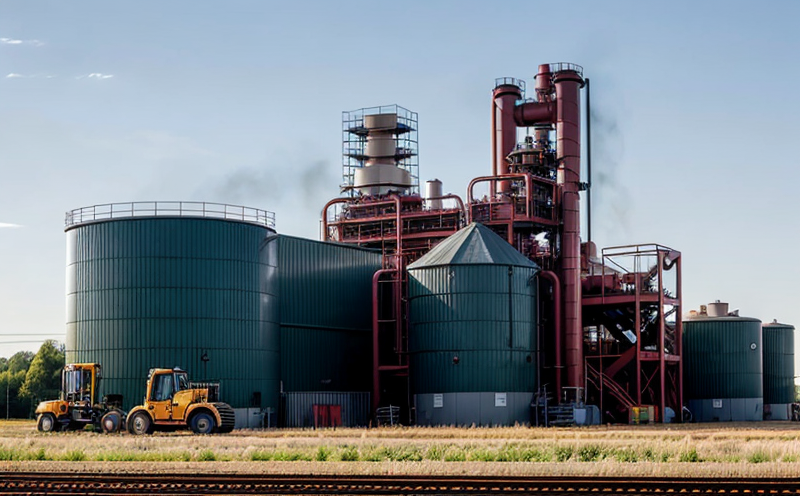ISO 3746 Hydraulic Pump and Motor Noise Testing
The ISO 3746 standard is designed to provide a method for measuring the noise emissions from hydraulic pumps and motors. This testing is crucial in ensuring compliance with international standards, optimizing performance, and enhancing safety within industrial environments.
Hydraulic systems are integral components of machinery used in various sectors such as automotive, manufacturing, construction, and aerospace. Noise generated by these systems can lead to occupational health issues for workers and contribute to environmental noise pollution. By adhering to the ISO 3746 standard, manufacturers can minimize these risks and improve product quality.
The testing process involves subjecting hydraulic pumps and motors under specified operating conditions to assess their sound pressure levels at various frequencies. This standardized approach ensures that all tested equipment is evaluated consistently against industry benchmarks. The noise measurement system typically includes a calibrated microphone positioned close to the equipment’s emission source, along with appropriate signal processing equipment.
The ISO 3746 standard specifies methods for measuring and reporting sound pressure levels (SPL) in both free-field and machine-borne conditions. SPL is measured in decibels (dB), which provides a quantitative measure of the noise level produced by hydraulic pumps and motors. The standard also outlines acceptance criteria that determine whether the equipment meets specified noise emission limits.
Understanding these parameters helps quality managers, R&D engineers, compliance officers, and procurement teams make informed decisions regarding product design and selection. By ensuring adherence to ISO 3746 standards, organizations can demonstrate their commitment to occupational health and safety while also meeting regulatory requirements.
The testing procedure is conducted in controlled laboratory settings where environmental factors are minimized to obtain accurate results. During the test, hydraulic pumps and motors operate at various load levels and speeds specified by the standard. The measured noise levels are then compared against predefined thresholds set forth by ISO 3746.
Accurate measurement of noise emissions is essential for identifying potential issues early in the development process. This allows manufacturers to address design flaws before mass production begins, resulting in higher-quality products and reduced costs associated with rework or recalls. Compliance with ISO 3746 standards also enhances a company’s reputation by showcasing its dedication to sustainability and worker safety.
By leveraging advanced acoustic measurement techniques, laboratories can provide reliable data that supports evidence-based decision-making. This ensures that hydraulic pumps and motors meet stringent noise emission requirements, thereby contributing to safer working environments and reducing the overall carbon footprint of industrial operations.
In conclusion, ISO 3746 hydraulic pump and motor noise testing is a vital component of ensuring product quality and compliance with international standards. It plays a crucial role in safeguarding both human health and environmental integrity by minimizing noise pollution from hydraulic systems.
Benefits
The benefits of ISO 3746 hydraulic pump and motor noise testing extend beyond mere compliance with international standards. By adhering to this standard, organizations can achieve several key advantages:
- Improved Product Quality: Ensuring that hydraulic pumps and motors meet specified noise emission limits helps maintain consistent product quality across all manufactured units.
- Enhanced Occupational Health: Reducing noise levels can significantly improve working conditions, promoting better health outcomes for employees exposed to machinery in industrial settings.
- Regulatory Compliance: Meeting ISO 3746 requirements demonstrates a commitment to regulatory standards and helps avoid potential legal challenges or penalties.
- Sustainability: By minimizing noise pollution, companies contribute positively towards environmental sustainability goals set forth by various international bodies.
- Better Reputation: Adhering to recognized global standards enhances a company’s reputation among customers and stakeholders who value responsible business practices.
Why Choose This Test
Selecting ISO 3746 hydraulic pump and motor noise testing offers several compelling reasons:
- Standardized Measurement: The test adheres to internationally recognized standards, ensuring consistent results across different facilities.
- Expertise: Our laboratory staff are trained professionals with extensive experience in conducting complex acoustic tests.
- Precision Instruments: We utilize high-precision equipment tailored specifically for measuring noise emissions from hydraulic systems.
- Comprehensive Reporting: Detailed reports provide actionable insights into performance metrics, highlighting areas for improvement if necessary.
- Supportive Services: Our team offers additional services such as training sessions and consultation to help clients understand the implications of their test results fully.
Use Cases and Application Examples
The application of ISO 3746 hydraulic pump and motor noise testing is wide-ranging, covering multiple industries:
- Automotive Industry: Ensuring that hydraulic components in vehicles meet stringent noise emission standards.
- Manufacturing Sector: Evaluating the noise output of machinery used in production lines to optimize working conditions and reduce complaints from employees.
- Construction Industry: Monitoring noise levels during operations to comply with local regulations and protect workers’ hearing health.
- Aerospace Sector: Testing hydraulic systems for aircraft to ensure they meet noise reduction targets set by aviation authorities.





